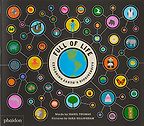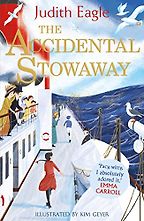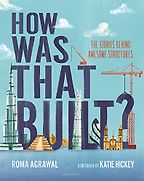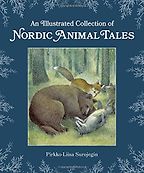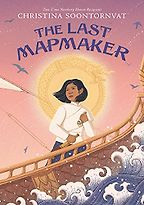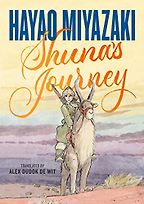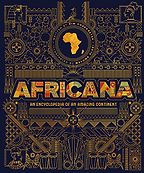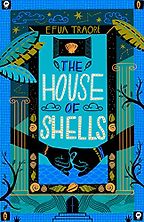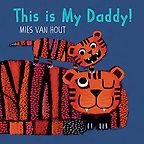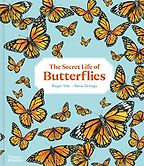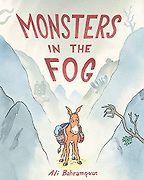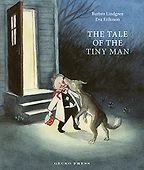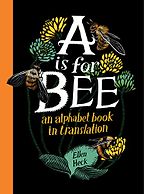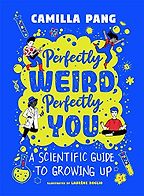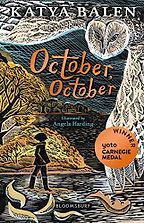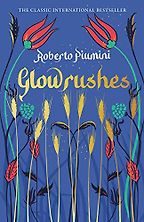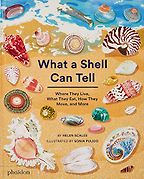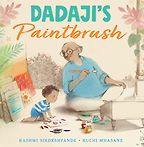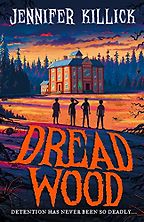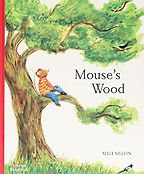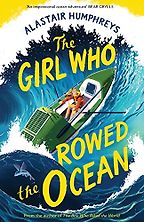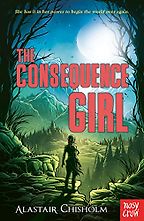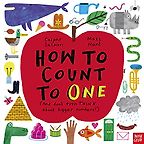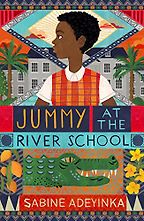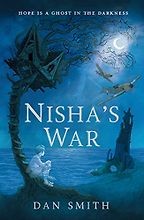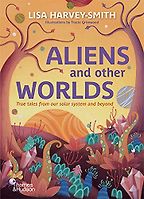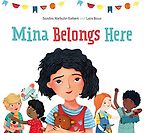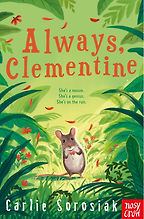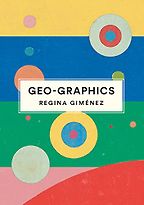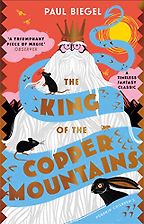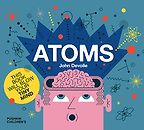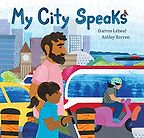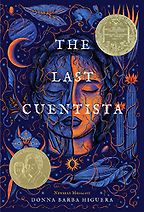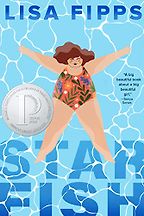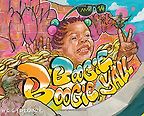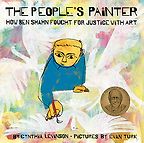Best Kids' Books of 2022
Last updated: April 15, 2025
On our list, we collect children's books that have won or been shortlisted for prestigious prizes in 2022 — such as American Library Association awards including the Newbery Medal in the US, and the Carnegie and Greenaway Medals in the UK — as well as our own selection of good books for kids that have come to our attention. This year there is also something special for all the mamas: a picture book celebration of motherhood which tugs at the heartstrings and is a perfect gift for new mothers.
2022 has turned out to be a great year for picture books, but we made sure to include plenty of novels and nonfiction for older children as well.
Full of Life: Exploring Earth’s Biodiversity
by Isabel Thomas & Sara Gillingham (illustrator)
This is a quality science book for kids written by the same award-winning science writer and illustrator that produced Exploring the Elements. Full of Life has some really interesting sections on the bigger picture (how much of biodiversity on Earth is bacteria) while most of the detail in the book is devoted to animals. It is illustrated throughout in a striking and colourful graphic style, and is an excellent resource for children across a broad age range. At 244 pages, it is a comprehensive but concise science book about our planet’s biodiversity, based on the ‘tree of life’ reference tool.
Ages 8-14
The Accidental Stowaway
by Judith Eagle & Kim Geyer (illustrator)
One day, in the rush to escape a constable after a misunderstanding about some toffees, 12 year old Patch finds herself on board an ocean liner just as the gangway is being lifted and the the ship steams off from Liverpool to New York. The novel is rich in descriptions of life – both above and below deck – on board an early 20th century ‘floating palace’, but is anyone on board who they claim to be? A delightful mystery adventure novel.
Ages 8-12
How Was That Built? The Stories Behind Awesome Structures
Roma Agrawal, Katie Hickey (illustrator)
“I love this book, because I like building things … kids can pick up this book and then the constructions that appear would be better as a result of reading it. It’s inspirational and gets you thinking about stuff … It’s really nicely written and really nicely illustrated.” Read more...
Best Science Books for Children: the 2022 Royal Society Young People’s Book Prize
Alan Wilson, Scientist
An Illustrated Collection of Nordic Animal Tales
Pirkko-Liisa Surojegin, translated by Jill G. Timbers
A collection of 26 traditional tales retold and exquisitely illustrated by Pirkko-Liisa Surojegin, a Finnish illustrator known for her expressive and delicate style. The stories all feature animals reflecting human behaviours, several of them with the cunning fox taking advantage of the hard-working bear. With large font and full-page illustrations, these lively stories are perfect for newly confident readers to read by themselves, but Nordic Animal Tales is also a lovely book to read aloud with younger children.
Ages 5-10
The Last Mapmaker
by Christina Soontornvat & Sura Siu (narrator)
Ages 8-12
🏆 2023 Newbery Honor Book
“This is one that was a family favourite. It’s a Thai-inspired fantasy world… I think it is an excellent audiobook, and one that stood out for its beautiful narration and also the complex story it’s telling for younger readers.” Read more...
The Best Audiobooks for Kids and Young Adults of 2022
Emily Connelly, Journalist
Shuna's Journey
by Hayao Miyazaki & translated by Alex Dudok de Wit
This graphic novel is an early work by the iconic Hayao Miyazaki, available in English for the first time. With simple language and not much text, children as young as 10 can enjoy it although it is primarily aimed at young adults. Read more about it in our selection of best books of 2022 for teens.
Africana: An Encyclopedia of an Amazing Continent
by Kim Chakanetsa & Mayowa Alabi (illustrator)
With the exception of Ancient Egypt, teaching about Africa in schools around the world tends to be sparse. It often seems that little thought is given to the diversity of the continent and its 54 countries, so this information book for kids is extremely welcome. At 96 pages it doesn’t go into depth, but there are two-page spreads for each region (North, East, Central, West and South) about topics such as history, people and culture, wildlife and landscapes, and famous individuals. There are also chapters on Global Africa and how Africa has influenced the rest of the world.
Ages 9-12
The House of Shells
by Efua Traoré
An adventure novel which perfectly blends everyday contemporary life and the world of Yoruba mythology. Kuki has recently moved from Lagos to the Lekki peninsula, where a dominating bully prevents her from making friends at her new school. When Kuki meets Enilo at an enchanting abandoned mansion by the sea and they become close friends, she tries to ignore her growing sense of unease about an old curse. A lovely story about friendship, family, making the right decisions and standing up to bullying.
Ages 9-12
This is My Daddy!
by Mies van Hout
The board book edition of this playful book which challenges young readers to match the daddy with the baby. Illustrated in Mies van Hout’s cheerful and distinctive style, in addition to being fun and interactive this book can help toddlers develop their observation skills. The less obvious pairs, such as tadpole and frog, are a helpful reminder about not making assumptions.
Ages 1-3
The Secret Life of Butterflies
Roger Vila, Rena Ortega (illustrator), translated by Paula Meiss
Rena Ortega’s glorious watercolour illustrations and text by Roger Vila, of the Institute of Evolutionary Biology in Barcelona, combine perfectly in this large format scientific picture book (48 pages). Young readers will be fascinated by these delicate creatures that lived among the dinosaurs and which go through several complete transformations in their lives. The Secret Life of Butterflies also explains why butterflies are crucial to our planet, and is a perfect scientific introduction to the concept of interdependence in nature.
Ages 6-10
Monsters in the Fog
by Ali Bahrampour
Hakim the donkey has knitted a jumper for his friend Daisy, which he is determined to deliver despite the thick fog. With his grounded personality, Hakim is able to ignore the doom-mongering of a goat who warns him about monsters up the mountain. The clear message is that we should question our preconceived notions. With sparse text and illustrations which are very effective in showing that things are not necessarily as they appear, this is a fun picture book to read together with kids.
Ages 3-6
The Tale of the Tiny Man
by Barbro Lindgren, Eva Eriksson (illustrator) & translated by Julia Marshall
A gently emotional picture book about loneliness and friendship, featuring an old man, a girl and a dog. The text and illustrations are seamlessly woven together, as one might expect from this author and illustrator collaboration – they have won a raft of prestigious awards in Sweden, where this book first came out in 1979. The Tale of the Tiny Man can serve as a good starting point for a discussion with children about emotions relating to exclusion or inclusion.
Ages 3-6
Big Hedgehog and Little Hedgehog Take an Evening Stroll
Britta Teckentrup, translated by Nicola Stuart
A lovely picture book by an award winning children’s illustrator and author based in Germany. The combination of hand drawing and digital collage brings a feeling of texture and brightness to the illustrations. This is a comfort story brimming with love of nature. The relationship between Little Hedgehog (who keeps finding reasons to stop along their walk) and the patient Big Hedgehog is very warm. Perfect as a bedtime story.
Ages 3-6
A Is for Bee: An alphabet book in translation
by Ellen Heck
An entertainingly subversive take on the usual alphabet book, with eye-catching scratchboard print illustrations. This is an educational picture book, too, giving children a glimpse of the world’s linguistic diversity. Each page has a letter of the English alphabet and animal words in languages other than English. A is for bee because bee is ‘aṅū’ in Igbo, ‘arı’ in Turkish, ‘aamoo’ in Ojibwe and ‘abelha’ in Portuguese. Hopefully any future edition will also include the scripts for those words in the languages that don’t use the Latin alphabet, to enable children to see some of the different writing systems in use around the world.
Ages 3+ and fun for adults too
Perfectly Weird, Perfectly You
by Camilla Pang & Laurène Boglio (illustrator)
This is an intriguing book by an award-winning writer, subtitled A Scientific Guide to Growing Up. Since childhood, the author (who was diagnosed with autism and later with ADHD) has loved the logic of the scientific world whilst often being baffled by social interactions. She could understand how metals react with the liquids and gases around them, but not how humans make friends with some people but not with others. In this book Dr Pang highlights scientific topics such as chemical reactions, forces, and cell specialisation and relates them to our experiences in life. This book will appeal especially to children growing up neurodiverse but it is very relatable in general, and the author’s enthusiasm for science is infectious. An excellent resource for teachers as well.
Ages 9-12
October, October
Katya Balen, Angela Harding (illustrator)
🏆 2022 Yoto Carnegie Medal
The reader quickly feels close to October, the quirky 11 year old narrator who lives off-grid with her father. October loves to find objects in the woods and imagine their stories, until one day her world is turned upside down and she is forced to move to London. There, she discovers mudlarking: searching for objects in the Thames riverbed when the tide is out. October, October is a lyrical novel alive with the beauty of the natural world, and of relationships given the chance to heal.
Ages 8-12
Glowrushes
by Roberto Piumini & translated by Leah Janeczko
In Turkey in the distant past, a boy called Madurer lives confined by illness to three windowless rooms. His father invites an artist named Sakumat to paint the walls of Madurer’s chambers. The friendship between the boy and the painter grows, but as Sakumat pours his soul into bringing the outside world to Madurer with his paints and brushes, the boy’s health is fading. This lyrical novel is a modern classic by one of Italy’s most loved children’s authors, available in English for the first time.
Ages 9-12 and for adults too
What a Shell Can Tell
by Helen Scales & Sonia Pulido (illustrator)
A richly illustrated scientific picture book (48 pages) by a marine biologist and an illustrator who lives by the sea. The author is very thoughtful about explaining the science in a simple way, without being patronising, leaving a lot of space for the colourful pictures. Young readers learn plenty of facts about shells and their diverse environments from coral reefs to the abyss, but What a Shell Can Tell is also a wonderful inspiration for children to think about the world by observing nature. A small accompanying activity kit is available to download.
Ages 6-10
Elisabeth and the Box of Colours
by Katherine Woodfine & Rebecca Cobb (illustrator)
This is a very sweet little dyslexia-friendly book inspired by the early life of Élisabeth Louise Vigée Le Brun (Queen Marie Antoinette’s favourite portrait artist). A story of family, friendship and the power of creativity to help deal with grief, this is a lovely book not just for dyslexic readers but for early readers who are ready to move from picture books to something a bit more like a novel.
Ages 5-9
Nour's Secret Library
Wafa' Tarnowska, Vali Mintzi (illustrator)
When the streets of Nour and Amir’s town turn into battlefields, the two children and their friends sneak out during lulls in the shelling to collect books and create a library which they name Al-Fajr (Dawn). The award-winning author spent months as a child in a basement to survive shelling during the civil war in Lebanon, where she took refuge in books. She was inspired to write this picture book by young people in Daraya, Syria, who under siege saved 15,000 books from bombed houses and created a library in the basement of an abandoned building. The illustrator cleverly uses charcoal to give a sense of the reality of war, and gouache to communicate hope and spirit; the text has a storytelling feel.
Ages 4-7
Dadaji's Paintbrush
by Rashmi Sirdeshpande & Ruchi Mhasane (illustrator)
Set in a village in India, this is a lovely picture book about the universal bond between children and grandparents, and a gentle way to raise the topic of mortality with young children. The close relationship between the boy and his dadaji shines out of the illustrations. After losing his grandfather the boy is overcome with grief, but a little girl insists that he teach her to paint, just like his dadaji had taught her mother. As the boy gives time and attention to painting and to the younger children in the village, the memory of his grandfather’s love gradually overshadows the pain of loss.
Ages 3-6
Journey Back to Freedom: The Olaudah Equiano Story
by Catherine Johnson & Katie Hickey (illustrator)
Born in West Africa in 1745, Olaudah Equiano was kidnapped at the age of 11 and enslaved in America and the Caribbean. This book focuses on the early part of his life, when he worked on ships, bought his freedom and fought in wars. It is a dyslexia-friendly retelling of his fascinating life story by a brilliant author of historical fiction for teens. Confident readers will hopefully go on to read Equiano’s autobiography, which became a bestseller in his own lifetime.
Ages 9-13
Dread Wood
by Jennifer Killick
Fast paced and full of macabre humour, this is a gripping read for children who enjoy thrillers. Four 12 year olds turn up at school for a Saturday detention, which they soon rename “deathention” as things go from bizarre to terrifying. While they figure out what is going on and in getting to know each other outside their normal environment, the children do some reflecting and come out of the experience more thoughtful and aware of the effect their actions can have on others. A word of warning: better not get this book for an arachnophobe.
Ages 9-12
Mouse's Wood
by Alice Melvin
A comforting picture book with 12 double-page spreads, one for each month of the year. There are also a few information pages about how the woods change through the (northern hemisphere) seasons and the small mammals that live there. The lovely illustrations of woodland scenes are accompanied by gentle rhyming text and flaps that can be lifted to look inside the houses of the anthropomorphic animals. Perfect for snuggly story time and plenty of details to talk about with young children.
Ages 3-6
The Girl Who Rowed the Ocean
by Alastair Humphreys
Schoolgirl Lucy wants a real adventure and decides to row across the Atlantic. She has wonderful experiences (shooting stars, dolphins, sea turtles, whales, storm petrels, bioluminescence), and terrifying ones (storms, gigantic cargo ships). She learns to assess risk, and that even when she cannot control the situation she can choose how to react. This is an inspiring book about what we can achieve if we take that crucial step that commits us to turn a dream into reality, and how even a distant goal can be reached by chipping away at it little by little. The novel is interspersed with pieces of homework written by Lucy’s classmates, who follow her journey and do research on the ocean. The fact that the author has actually rowed across the Atlantic makes for a realistic and engaging story.
Ages 8-12
The Consequence Girl
by Alastair Chisholm
13 year old Cora has a unique power which she is learning to control: she can see back from effect to cause, and sometimes she can even change the past. Everyone - the authorities, the church, rebels - wants to use her as a weapon, ostensibly to make the world better. Who can she trust, and will she ever be able to make her own decisions? A pacy thriller with some big themes.
Ages 9-12
How to Count to One
by Caspar Salmon & Matt Hunt (illustrator)
Subtitled ‘And don’t even THINK about bigger numbers!’ this is a humorous take on books that help children learn to count. Lots of interactive fun to be had.
Ages 2-5
Jummy at the River School
by Sabine Adeyinka
A charming boarding school novel set in southwestern Nigeria. Jummy is delighted to be offered a place at the River School, but how can she fully enjoy it when her best friend Caro has to quit school to work instead? As Jummy grows out of her habit of shirking and discovers the great feeling of being part of a team, can she and her new friends find a way to help Caro get the opportunity she also deserves?
Ages 8-12
Nisha's War
by Dan Smith
When the Japanese invade Malaya in World War Two, Nisha escapes to her paternal grandmother’s home on an English island. The novel is interspersed with entries from Nisha’s own journal, sunny memories of eating fresh fruit and running barefoot, and awful ones of planes diving from the sky and the rattle of machine guns firing on civilians. At first Nisha thinks her grandmother’s lack of sympathy is because she disapproves of Nisha’s Indian mother, but gradually she comes to understand that there is something else behind her grandmother’s coldness. An evocative story of finding courage and carrying on when life is tough, as well as a gentle ghost story.
Ages 9-12
Who's Hiding?
by Satoru Onishi
This Japanese classic now has a board book version in English. Who’s Hiding has an appealingly simple format: each two-page spread features the same 18 stylised animals, but with some differences. The interactive aspect means that young children and adults or older siblings can have a lot of fun reading it together, while kids also learn to pay attention to detail.
Ages 2-5
Aliens and Other Worlds: True tales from our solar system and beyond
by Lisa Harvey-Smith & Tracie Grimwood (illustrator)
This is a richly illustrated non-fiction book written by an award-winning astrophysicist. It explores questions such as what makes a planet suitable for life, and whether we can learn anything from Earth’s extremes about aliens. Harvey-Smith has a talent for making science accessible and engaging.
Suitable for earthlings around 7-12 years old.
Mina Belongs Here
Sandra Niebuhr-Siebert, Lars Baus (illustrator), translated by Polly Lawson
The author is a professor of language education and a specialist in multilingualism in kindergartens. In this picture book she conveys brilliantly what it is like for Mina to start at a new kindergarten where she doesn’t understand the language. The illustrations interweave seamlessly with the story, becoming more and more colourful as Mina’s ability to communicate and her sense of belonging grow.
Ages 3-6
Always, Clementine
by Carlie Sorosiak
Clementine is a genius. She is also a mouse. And she is on the run from the lab that bred her. Always, Clementine consists of letters composed in Clementine’s head to her friend Rosie, a chimpanzee who is still in the lab. Readers have the excitement of the chase, Clementine’s enthusiasm when introduced to the game of chess, and the message that we should define success for ourselves. As Clementine puts it, “if someone is telling you what you have to be, then you might lose the opportunity to be what you are”. A fun novel in short chapters, perfect for newly confident readers and a good choice of book to read aloud to siblings of different ages.
Ages 6-11
Phyllis and Grace
Nigel Gray, Bethan Welby (illustrator)
A girl called Grace lives next door to Phyllis, an elderly woman whose memory is fading. There is an underlying sadness about Phyllis' decline, but overall this is a very warm story about the genuine friendship between the two, with humorous touches. A gentle picture book which is perfect for helping children understand what is going on if someone they know has dementia.
Ages 4-7
Beyond Belief: The Science of the Future
by Alex Woolf & Jasmine Floyd (illustrator)
This lively non-fiction book will intrigue children across a wide age range and is an excellent resource for teachers. Some of the topics – such as space colonies, teleportation and time travel – still seem like sci-fi. Others – including human cloning, designer babies and super-intelligent machines – are probably closer to technological reality and raise a lot of ethical and philosophical questions. Richly illustrated and relatively short (70 pages), Beyond Belief doesn’t go into a lot of detail about each topic, but is very current and gives readers plenty to think about.
Ages 7-13
Geo-Graphics
Regina Giménez, translated by Alexis Romay and Valerie Block
Geo-Graphics presents information about our planet with an emphasis on the visual. It is perfect for children who prefer to absorb knowledge through diagrams and illustrations rather than dense text, and interesting for a wide age range. The retro graphic art style, reminiscent of early 20th century constructivism, will appeal to many adults as well. There are five chapters: the universe, the earth, topography, water and climate.
Ages 8-14
The King of the Copper Mountains
Paul Biegel, Sally J. Collins (illustrator), translated by Gillian Hume
After a long reign, King Mansolain’s heart is slowing down. While the doctor races to a distant mountain to get a cure, a regular dose of stories is the only thing that can keep the king’s heart ticking. Animals big and small arrive from all over the kingdom to tell their tales at the castle in the copper mountains. This is a new English edition of the prize-winning Dutch classic, illustrated in black and white. Ages 7-11
The Midnight Fair
by Gideon Sterer & Mariachiara Di Giorgio (illustrator)
2022 Yoto Kate Greenaway Medal Shadowers’ Choice Award
A funfair is being set up at the edge of a forest. Intrigued, wild animals quietly watch from inside the dark woods. When the lights are turned off for the night and people leave, the animals switch them back on and start their own party. The illustrator plays wonderfully with shadow and brightness, and the colour flow recreates the movement of the lights in the night. The perspective of looking on from outside evokes a world that continues beyond the confines of the page. This is a wordless picture book, perfect for children who like to tell the story in their own words.
Ages 3-7
Do You Want a Hug?
by Olivia Cosneau & paper engineer: Bernard Duisit
A well produced board book with a different type of tab to pull or flap to lift on each two-page spread. Various animals are asked “do you want a hug?” They give different answers and show affection in their own ways, so this book can be an early introduction for little ones to the concept of consent, as well as being a fun, interactive read.
Ages 1-4 (a bit of attention needed to ensure younger readers don’t rip it apart)
Atoms
by John Devolle
This picture book explains a complex subject through a simple narrative with sparse text and big, bold illustrations. A book to spark young children’s curiosity and interest in science.
Ages 3-7
My City Speaks
Darren Lebeuf & Ashley Barron (illustrator)
🏆 2022 Schneider Family Book Award for young children
A visually impaired narrator describes the sounds, smells and tastes of the city on the way to a music recital in the park. The rhythmic, alliterative language and colourful textured collage illustrations will appeal to young children. An engaging picture book about the ways we experience the world, encouraging children to think about all the different senses.
Ages 2-6
The Last Cuentista
by Donna Barba Higuera
🏆 2022 Newbery Medal
Science fiction blended with Mexican folklore. If you leave Earth in the knowledge that you can never return, what will you want to take with you? 12 year old Petra Peña chooses her grandmother’s stories. But on board her spaceship a fanatical Collective is bent on creating a utopia by erasing everyone’s memories and purging those they are unable to reprogramme. If we make a new society by forgetting what we have left behind, will we know what it is to be human? A novel about the importance of remembering stories and passing them on, and of creating our own stories.
Ages 10-14
Red, White, and Whole
by Rajani LaRocca
***2022 Newbery Honor Book***
It is 1983 and 13 year old Reha is juggling very separate lives at school and at home. Her parents from India refuse to acknowledge that Reha is growing up at least partly American. Reha wants to fit in at school but she also wants her parents to be proud of her; sometimes it feels like she doesn’t fully belong anywhere. A whole other dimension of struggle is added to Reha’s life when her mother is diagnosed with leukemia. An intimate novel in verse.
Ages 9-14
Starfish
by Lisa Fipps
American Library Association Amazing Audiobook 2022
***2022 Michael L. Printz Honor Book (for Young Adult Literature)***
11-year-old Ellie has been relentlessly bullied for being fat ever since her fifth birthday party when she jumped in the swimming pool and was given the name Splash. She feels most herself in the pool where she can stretch out like a starfish and take up as much space as she wants. Can she gain the confidence to defend herself against all those who want to make her feel small, and starfish outside the pool too? A heartfelt novel in free verse.
Ages 10-13
Boogie Boogie, Y’all
by C. G. Esperanza
🏆 2022 Odyssey Award: Best Audiobook for Children
A picture book celebration of graffiti culture. Whilst the adults in the book either ignore or complain about the graffiti they see around them, kids notice the art and love it. The book has an infectious enthusiasm for urban culture and would be a great starting point for a discussion with children about life in art and art in life. The hip hop audiobook is narrated by the author/illustrator.
Ages 3-6
The People's Painter: How Ben Shahn Fought for Justice with Art
by Cynthia Levinson & Evan Turk (illustrator)
🏆 2022 Robert F. Sibert Informational Book Medal
A picture book about the life and work of Benjamin Shahn (1898-1969), from his childhood in Lithuania as a Jew under Tsar Nicholas II to his life as a young immigrant and later an established artist in the United States. This book is very much about the process of being an artist, about knowing who you are in order to find out what kind of artist you are. Shahn used his art for social dialogue, insisting that the purpose was to communicate. Evan Turk effectively uses connected scenes, distorted shapes and symbolic forms to tell the visual part of the story.
Ages 4-7
